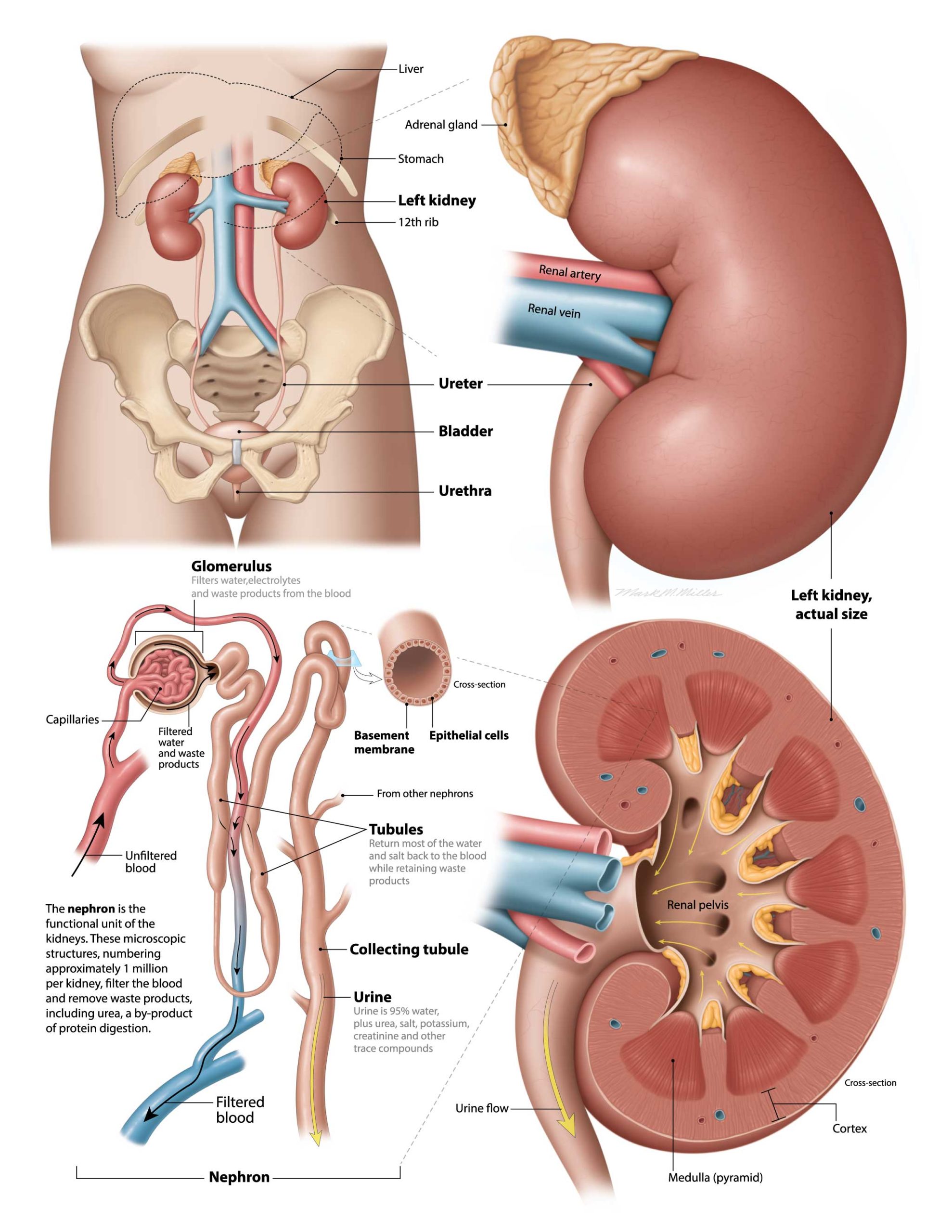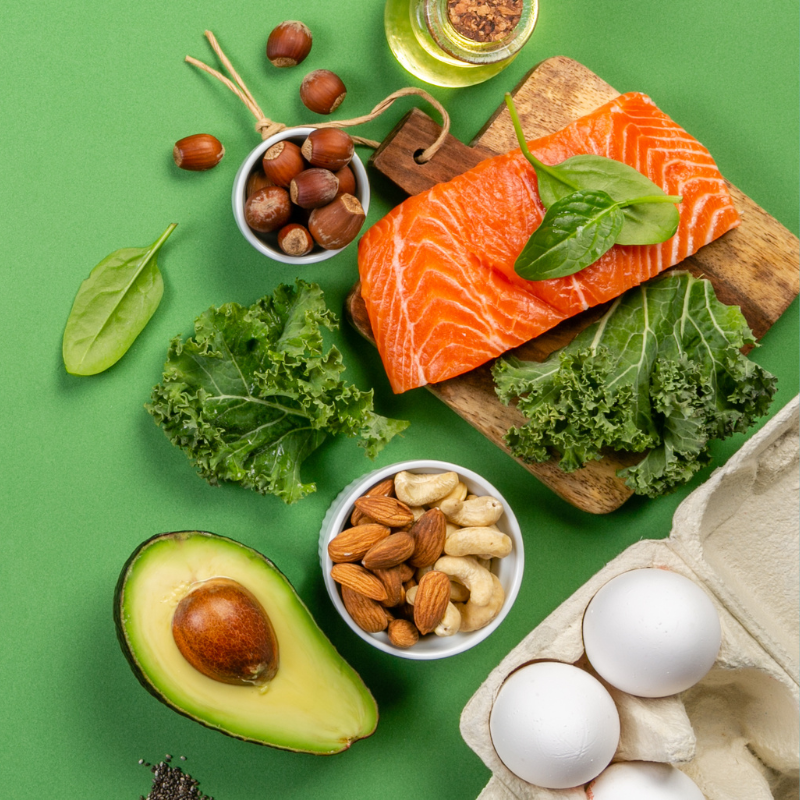
Kidney 101
Typically, each of us is born with two kidneys. They are located in the back of the body on each side of the spine, tucked under the rib cage. Each kidney is about five inches long (12 cm), three inches wide (8 cm), and two inches thick (5 cm) with each one weighing 10 to 12 ounces (280 to 340 grams).
Both kidneys are affected by polycystic kidney disease (PKD). The number of cysts that are detectable by imaging tests increases with age and can range from just a few to too many to count. The size of individual cysts also increases with age and may range from that of a pinhead to a grapefruit.
On average, a PKD patient’s total kidney volume (TKV) as measured by MRI will increase by about five percent per year despite your kidney function remaining within the normal range for several decades. Studies have shown that TKV expansion to 1,000 to 1,500 mL (normal TKV: 250–350 mL) is associated with a significant risk for a future decline in kidney function. Thus, TKV is being used as a surrogate disease outcome measure in clinical trials of novel drug treatments for PKD.
Your kidney is a filter
Each of your kidneys contains about one million tiny filters called nephrons. The nephrons are made of a tuft of thin blood vessels in a spherical structure called the glomerulus which is connected to a series of tubules. Almost a quarter of the blood your heart pumps every second passes through the nephrons. Red blood cells, white blood cells, and large substances like proteins do not normally pass through, staying inside the glomerular blood vessels instead. The 180 liters (approx. 47 gallons) of fluid that passes through the filters of your kidneys each day is made up of water, electrolytes (sodium, potassium, calcium, and phosphorus) and other small substances. Most of the fluid that passes through the glomerulus is modified and reabsorbed during transit through the tubules of the nephron. This leaves one to two liters (a quart to a half-gallon) as urine each day. The process of filtering and reclaiming fluid along the nephron enables normal kidneys to perfectly maintain your body’s fluid composition with electrolytes and blood pH regulated within a specific concentration or range. Your kidneys also filter and excrete waste products generated from your diet and body metabolism each day.

Waste products of the kidneys
Blood Urea Nitrogen (BUN) and creatinine are two waste products removed by the kidneys. In particular, creatinine is removed so efficiently that an estimate of actual kidney function can be made by the level of this substance in the blood. Your doctor can calculate approximately how much actual kidney function you have with a blood test for creatinine. This can be used to calculate your estimated glomerular filtration rate (eGFR). Your eGFR tells your doctor the approximate percent of “normal” kidney function you have.
Hormones and your kidneys
Your kidneys also make several essential hormones and enzymes. One of these is renin, an enzyme that facilitates the production of other hormones such as angiotensin (helps regulate blood pressure) and aldosterone (aids in the body’s handling of salt and potassium). Another hormone made in the kidneys is erythropoietin, commonly known as EPO. This hormone tells the bone marrow to make red blood cells. If your kidneys are surgically removed or if they fail because of kidney disease, EPO is no longer produced and you may become anemic. Synthetic forms of EPO are available that patients can take to correct their anemia. The kidneys also modify vitamin D to its active form, which helps the body absorb calcium from the diet. In this way, the kidneys help control the blood calcium and phosphate levels and thus bone formation.

Get the latest information on treating PKD.
Resource Articles
ARPKD, PKD in children
Additional Resources
- Dialysis 101
- Managing nutrition as dietary needs change from pre-dialysis to post transplant







